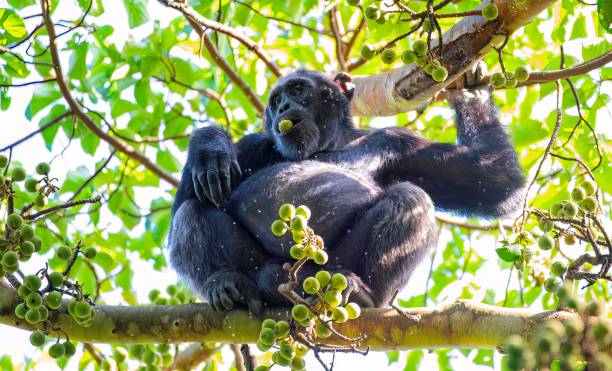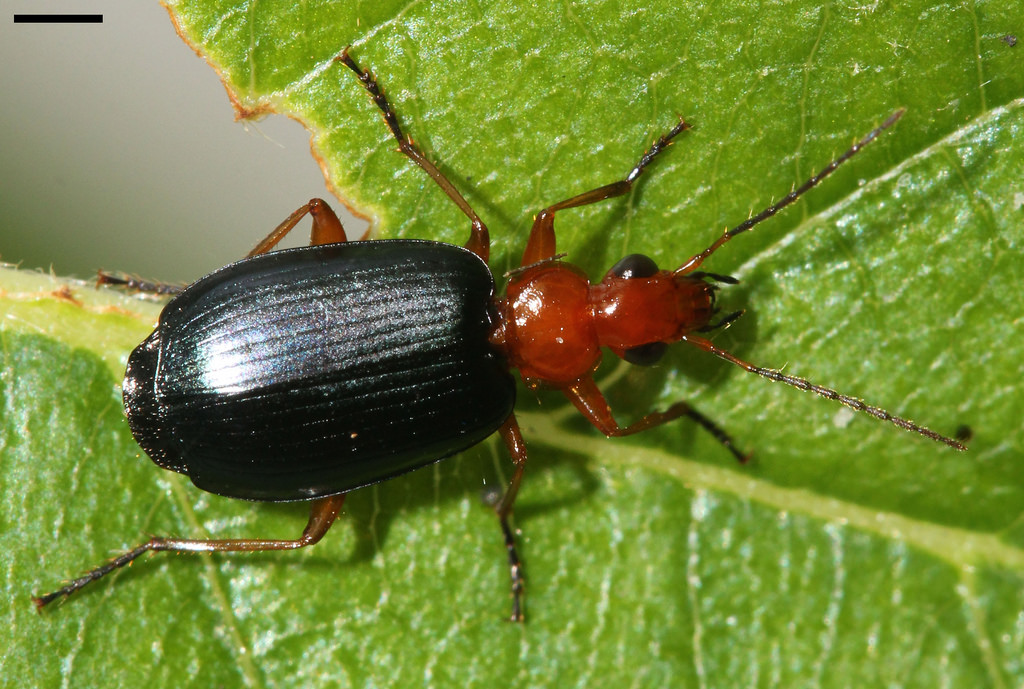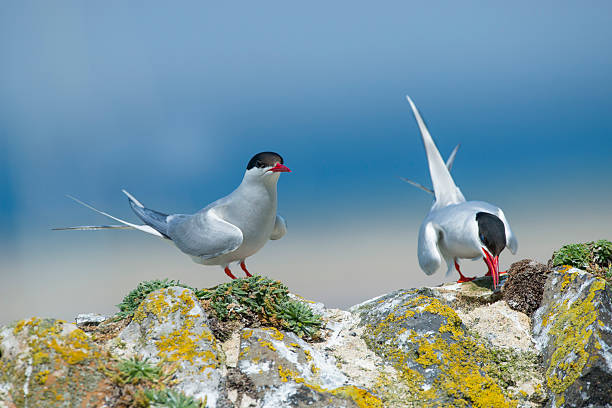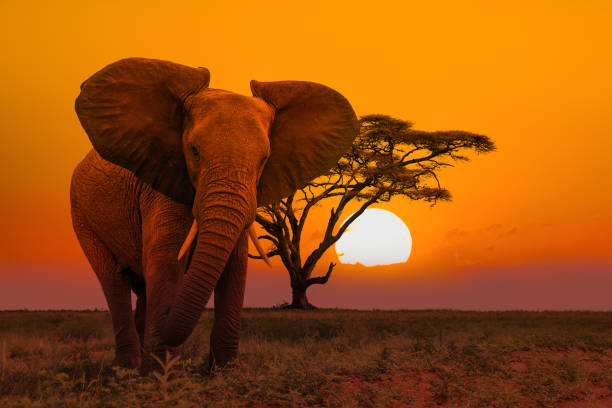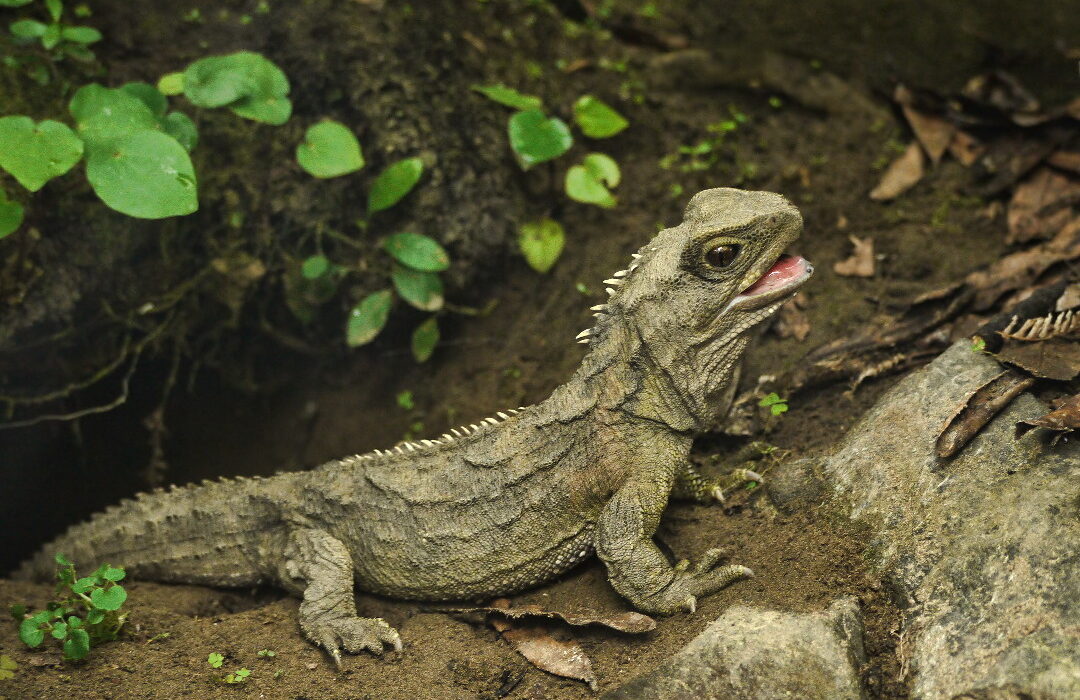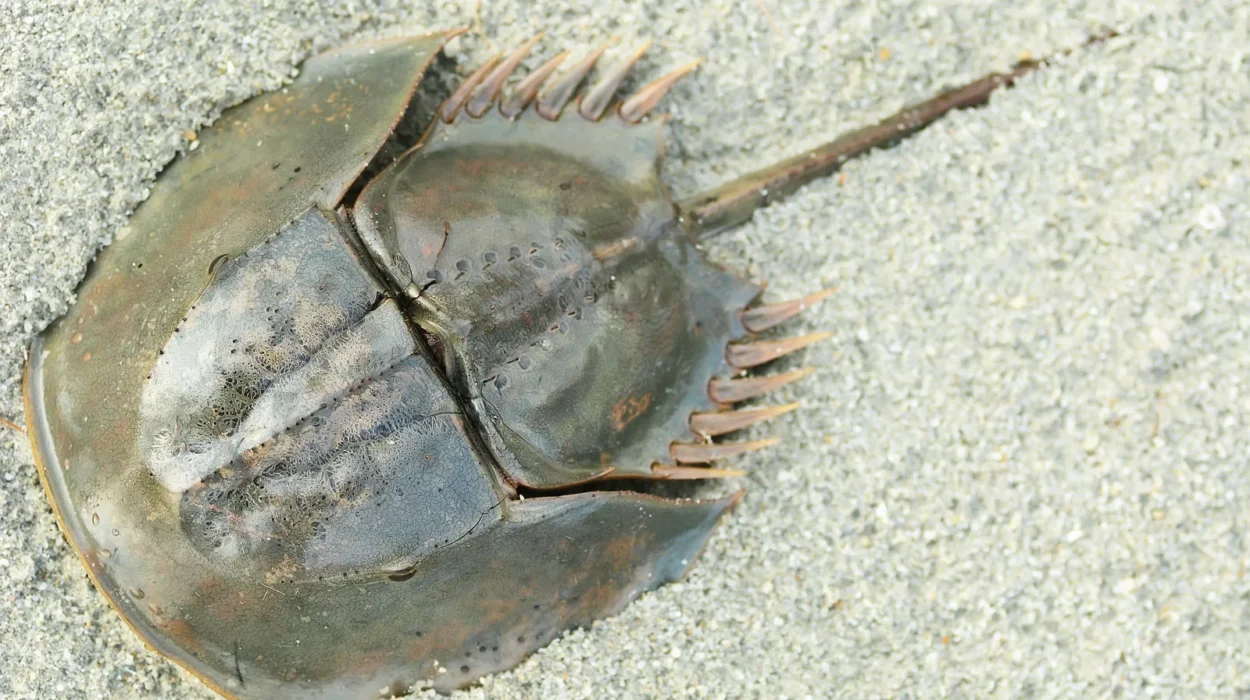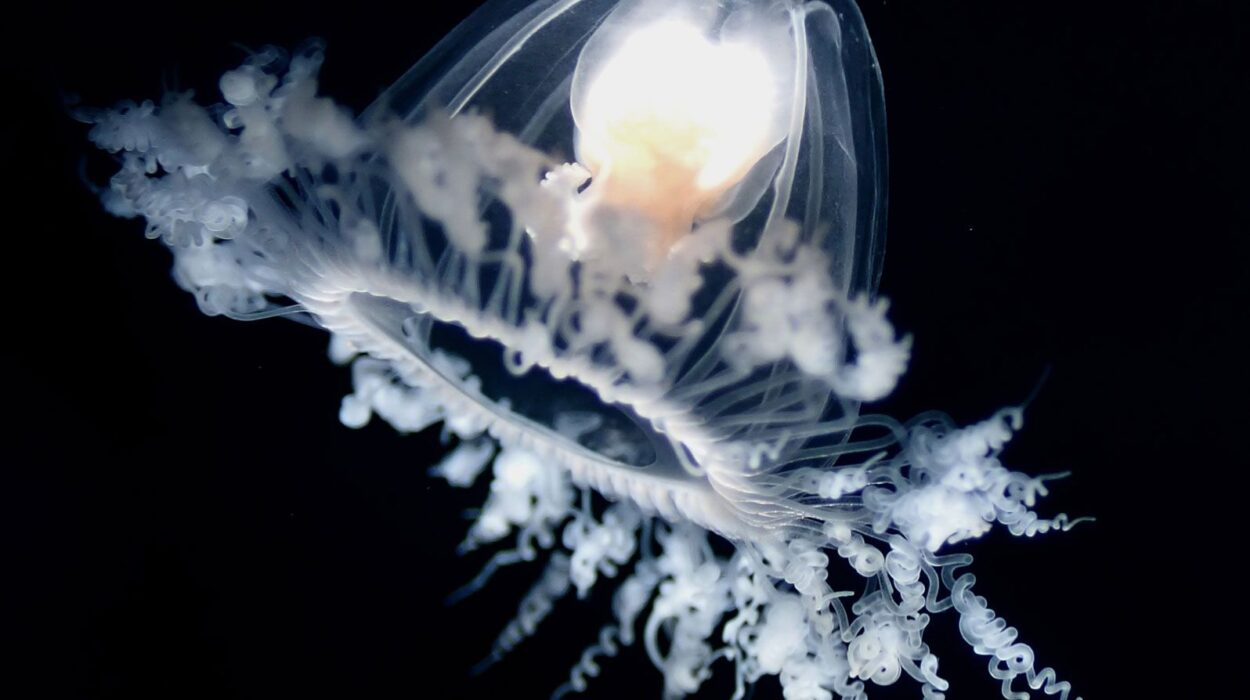Imagine standing before a mirror. You see yourself—your face, your eyes, your every movement. You know that reflection isn’t another being but you. This awareness, this understanding of the self, is one of the most profound forms of consciousness. For centuries, philosophers and scientists have wondered: What does it mean to be self-aware?
Humans, of course, are deeply self-aware. But we’re not alone. Across the animal kingdom, a select few species have passed what’s known as the mirror test—a simple yet profound experiment designed to detect self-recognition. Developed by psychologist Gordon Gallup Jr. in 1970, the test involves marking an animal in a place it can’t see directly, then placing it before a mirror. If the animal uses the reflection to inspect or touch the mark, it demonstrates an understanding that the image in the glass is itself.
This moment—when a creature stares into the mirror and realizes I am me—is more than a scientific test. It’s a window into consciousness itself. It’s the crossing of a line between instinct and identity, between existing and knowing you exist.
Here are ten extraordinary animals that have looked into the mirror and found themselves.
1. Chimpanzees – The First Reflected Minds
Chimpanzees were the pioneers of self-recognition among non-human animals. In the early 1970s, Gallup’s groundbreaking experiments revealed that chimpanzees could identify themselves in a mirror.
When a chimp was marked with a spot of dye on its forehead while under anesthesia, it later used a mirror to inspect and touch the mark—sometimes even sniffing its fingers afterward, as if confirming the mystery with another sense. This was not imitation or curiosity—it was recognition.
Chimpanzees show a clear range of behaviors associated with self-awareness: they use mirrors to groom themselves, inspect hidden parts of their bodies, and even make funny faces for amusement. They demonstrate embarrassment, empathy, and planning—emotions that grow from a strong sense of “self.”
In the shimmering surface of the mirror, a chimp doesn’t just see a reflection—it sees a being that is aware.
2. Bottlenose Dolphins – The Conscious Swimmers
Deep in the ocean, where light dances like liquid glass, another mind stirs with self-awareness. Bottlenose dolphins, with their remarkable intelligence and complex social lives, have repeatedly passed the mirror test.
In a famous study conducted at the New York Aquarium, dolphins named Presley and Tab began to use mirrors to explore their own bodies. They twisted, turned, and performed movements clearly aimed at seeing themselves from every angle. When marked with temporary ink, they swam up to reflective surfaces to inspect the marks, proving that they recognized their reflections as themselves.
Dolphins live in social groups that require communication, cooperation, and emotional intelligence. Their self-awareness likely evolved as a necessity—to understand others, they first had to understand themselves.
When you look into a dolphin’s eye, you see a spark of awareness that feels almost human. Their mirrored world beneath the waves is not just physical—it’s mental, reflective, alive.
3. Asian Elephants – The Gentle Giants of Self
When an elephant approaches a mirror, the air changes. These gentle giants move with a kind of quiet intelligence that fills the room with awe. In a study at the Bronx Zoo, elephants named Happy, Maxine, and Patty were tested for mirror self-recognition.
Only one—Happy—passed decisively. When researchers marked her forehead with paint, she repeatedly touched the mark using her trunk while looking in the mirror. She understood: the reflection was not another elephant, not a rival or a friend, but herself.
Elephants show signs of empathy, mourning, and emotional memory. They comfort distressed companions, mourn their dead, and remember the locations of waterholes for decades. Their recognition of themselves in mirrors is an extension of this emotional and cognitive depth—a reflection of their remarkable consciousness.
For an elephant, the mirror is more than a surface. It’s a meeting place between memory and being, between the body and the soul.
4. Magpies – The Birds That Knew Themselves
When we think of intelligence, we often picture mammals. Yet one of the most astonishing examples of self-awareness comes from the skies—from the curious, clever magpie.
In 2008, scientists in Germany conducted a mirror test on magpies. They placed a colored sticker under the birds’ beaks—a place they could only see in a reflection. When shown a mirror, the magpies immediately began to peck at the sticker on their own bodies, not on the mirror.
This was revolutionary. It proved that self-recognition had evolved independently in birds, whose brains differ greatly from those of mammals. Magpies belong to the corvid family (which includes crows, ravens, and jays), known for their problem-solving skills, tool use, and long-term memory.
These birds seem to possess not just awareness, but curiosity about the self. When a magpie stares into the mirror, it’s as if it’s whispering a secret to itself: I am me.
5. Orcas – The Ocean’s Mirror Minds
Orcas, or killer whales, are among the most emotionally complex creatures on Earth. They live in tight-knit family groups and communicate through dialects unique to their pods—cultural behavior once thought to be purely human.
In controlled studies, orcas have demonstrated behavior consistent with self-recognition. They use mirrors to examine parts of their bodies and respond differently to their own reflection than to images of other orcas.
Their intelligence extends beyond mimicry. Orcas display grief, playfulness, and even cultural transmission of hunting techniques. Recognizing oneself in a mirror suggests a deep internal world—a sense of individuality within a collective society.
When an orca glides past its reflection, the realization seems to ripple beneath the surface: I am not just part of the pod. I am a being.
6. Great Apes – Gorillas, Bonobos, and Orangutans
All great apes—chimpanzees, bonobos, gorillas, and orangutans—have shown the potential for self-recognition. Yet each species expresses it in its own remarkable way.
Orangutans, for instance, use mirrors to explore their faces and even play games, making expressions and gestures that suggest self-awareness. Their solitary nature makes this introspection feel fitting; they are the philosophers of the rainforest canopy.
Bonobos, humanity’s closest living relatives, exhibit empathy, compassion, and emotional intelligence. They pass the mirror test and use reflection as a social tool—sometimes grooming or adjusting their appearance, as if preparing for an encounter.
Gorillas, for years, were thought to fail the mirror test. But researchers later realized that cultural factors might explain this. Some gorillas were trained never to make eye contact—a sign of aggression in their societies—so they avoided mirrors. When researchers adapted their approach, several gorillas, like the famous Koko, showed clear self-recognition behaviors.
Each great ape species offers a window into the evolution of self-awareness, revealing how the capacity to see oneself grows from empathy, memory, and social understanding.
7. European Jays – The Empaths of the Avian World
European Jays, cousins to magpies, are another remarkable example of avian intelligence. While their ability to pass the traditional mirror test is debated, they have demonstrated behaviors that suggest a deep form of self-awareness.
In experiments, male jays that had been observed caching food altered their hiding strategies when watched by others—suggesting they could imagine how others might see them. This kind of “theory of mind” requires an understanding of the self as separate from others.
Some individuals have even responded to mirrors with behavior that indicates recognition—not aggression or confusion, but curiosity. They look behind mirrors, use them to inspect themselves, and sometimes perform deliberate movements as if testing the reflection’s response.
The mirror might not always reveal what lies within, but the jays’ intelligence proves that the light of self-awareness flickers in unexpected places—even behind a feathered gaze.
8. Cleaner Wrasse – The Smallest Minds, the Deepest Surprise
Among all creatures that have faced the mirror, none surprised scientists more than the cleaner wrasse, a small tropical fish known for removing parasites from larger fish.
In 2019, researchers tested the wrasse using a version of the mirror test. To everyone’s astonishment, these fish repeatedly approached the mirror, inspecting marks placed on their throats and attempting to rub them off—something they did not do without the mirror present.
Could a fish really recognize itself? The question sparked heated debate. Some argued that this behavior was instinctive, not reflective. Others saw it as evidence that self-awareness might exist on a spectrum, not as an all-or-nothing trait.
Whether or not the wrasse truly “knows” itself, its behavior challenges our assumptions about consciousness. Perhaps even the smallest creatures hold a glimmer of self—the beginnings of awareness swimming beneath the surface of evolution.
9. Pigeons – The Perceptive Urban Philosophers
Pigeons might seem like unlikely philosophers, but these city dwellers are far smarter than most people realize. They can recognize human faces, understand abstract concepts like symmetry, and even distinguish between different artistic styles.
In some experiments, pigeons have been trained to use mirrors to locate hidden objects or body parts. They can learn to associate their reflections with their own movements, a form of “conditional self-recognition.”
While they may not pass the mirror test as cleanly as apes or dolphins, pigeons blur the boundaries between learned behavior and self-awareness. Their perception, adaptability, and problem-solving abilities show that intelligence takes many forms—sometimes humble, sometimes hidden in plain sight.
When a pigeon glances at its reflection in a puddle, perhaps it sees more than a double. Perhaps it sees a creature surviving, adapting, and understanding its place in a complex human world.
10. Ants – The Unexpected Introspectors
It might seem impossible, but in 2015, researchers in France found evidence that ants—specifically the species Formica rufa—could recognize themselves in a mirror.
When marked with a blue paint spot, some ants examined and attempted to remove the mark while looking at their reflection. Others showed no reaction, suggesting that only a few individuals might display this behavior.
If confirmed, this would make ants the smallest creatures ever to show a hint of self-recognition. However, scientists remain cautious. Their complex social structures and reliance on chemical cues make it difficult to interpret such behavior.
Yet the idea is humbling: perhaps consciousness, in some rudimentary form, is more widespread than we imagine. Even an insect might, in its own mysterious way, possess a spark of self.
What the Mirror Test Really Means
The mirror test doesn’t just measure intelligence—it measures a kind of awareness that bridges the physical and mental worlds. Recognizing oneself requires more than memory or problem-solving; it requires self-representation, the understanding that “I exist as an individual.”
Passing the test is rare, but not passing doesn’t mean an animal lacks intelligence. Dogs, for instance, often fail the mirror test but excel at social awareness. They may not identify their reflection, but they recognize themselves through smell—a reminder that self-awareness might take different forms in different species.
The mirror, then, is only one kind of truth. It reflects what we can see, but not always what we are.
The Evolutionary Meaning of Self
Why does self-awareness evolve? The answer may lie in social life. Species that live in complex groups—apes, dolphins, elephants, crows—need to understand not only others’ intentions but their own. This requires an internal model of the self, a sense of identity that guides behavior.
Self-awareness also allows for empathy, planning, and morality. To feel compassion, one must understand another’s suffering. To plan, one must imagine oneself in the future. Every reflection in the mirror is, in essence, the mind learning to see itself across time and space.
The Emotional Dimension of Reflection
There’s something hauntingly beautiful about an animal recognizing itself. A chimpanzee touching its face, a dolphin twisting to see its body, an elephant exploring its trunk—it’s as if nature itself is looking back through the glass.
In that moment, there is no hierarchy of species, no barrier of language—only a shared consciousness, an understanding that life recognizes life.
Each creature that passes the mirror test reminds us of a universal truth: awareness is not a privilege of humanity, but a phenomenon woven into the fabric of life. Every mind, great or small, reflects a fragment of the cosmos trying to know itself.
The Reflection That Binds Us All
From the jungles where chimps laugh at their own faces to the oceans where dolphins admire their forms, from magpies gleaming under sunlight to elephants tracing their reflections with a trunk—the story of the mirror is the story of the mind awakening.
Perhaps one day, more species will join this silent brotherhood of reflection. Or perhaps many already have, in ways our mirrors cannot capture.
What matters is the realization that self-awareness is not a mirror’s trick—it is a miracle of existence. When any creature looks at its reflection and whispers, that’s me, it is not just seeing an image. It is witnessing the light of consciousness—ancient, tender, and endlessly alive.
